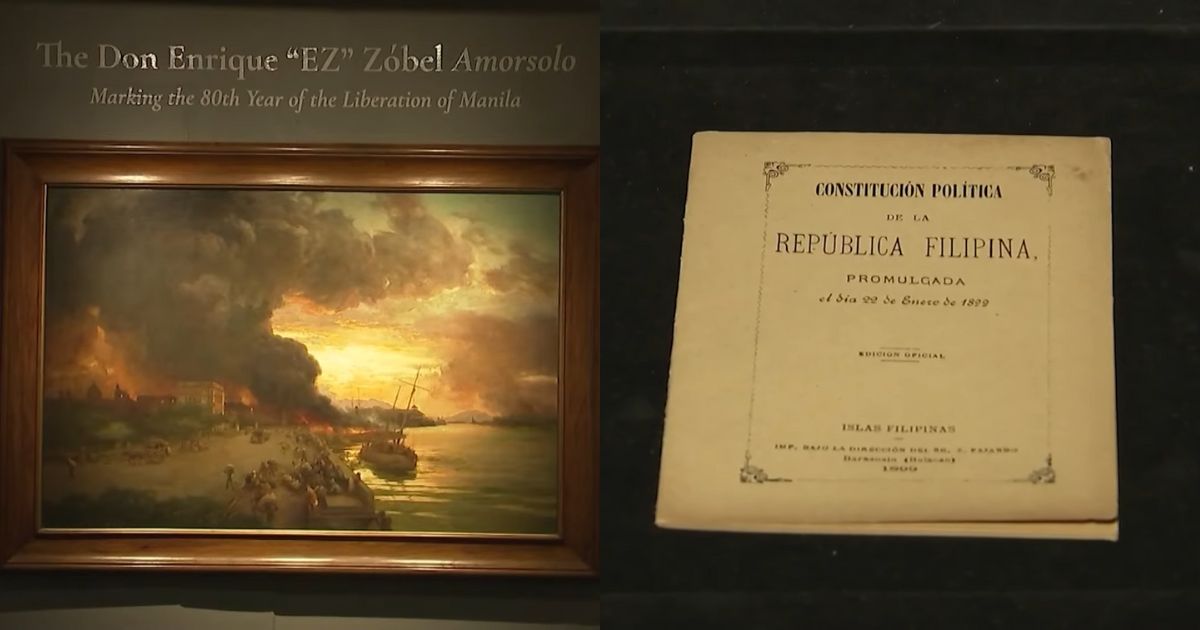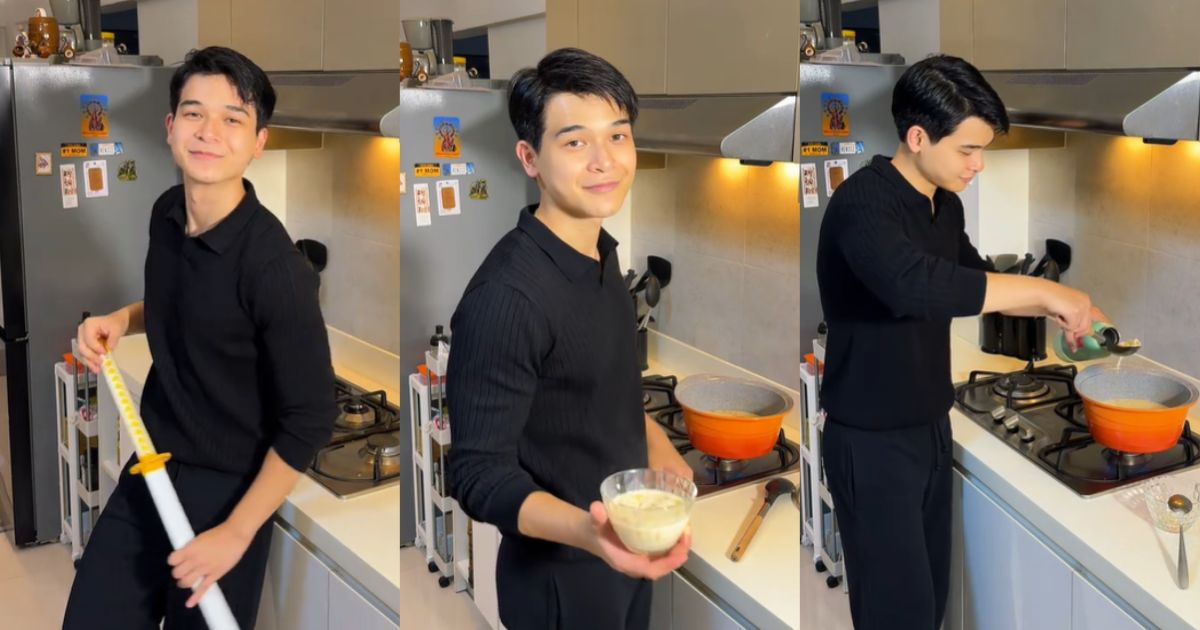
Upgrade to High-Speed Internet for only ₱1499/month!
Enjoy up to 100 Mbps fiber broadband, perfect for browsing, streaming, and gaming.
Visit Suniway.ph to learn
 MEET THE ARTIST Melvin Gurhem
MEET THE ARTIST Melvin GurhemIn his 13th solo exhibit, aptly titled “Aeternum Dolorem” - Latin for “eternal pain” - Filipino fabric artist Melvin Gurheim takes his viewers into his intricate and often disquieting personal history. Currently showing at Art Cube Philippines until May 7, the collection of handcrafted textile art serves not as lament, but as a profound exploration of pain’s enduring presence, particularly within the sphere of family and kinship.
 'ELUXOROMA,' textile and thread on canvas, 53x71 inches, 2025
'ELUXOROMA,' textile and thread on canvas, 53x71 inches, 2025Stepping into the exhibit is like entering Gurheim’s very psyche. The artist employs the horror vacui aesthetic, a deliberate filling of the entire surface with intricate detail, to depict what he describes as his “malignant familial narrative.” Through a dense layering of vividly colored fabric cutouts and elaborate stitchwork, he conjures scenes brimming with chaos and a palpable sense of anguish. Distorted, surreal figures inhabit these richly textured spaces, their strained relationships underscored by the very fabrics that connect them.
 'ETERNAL PAIN,' textile and thread on canvas, 48x72 inches, 2025
'ETERNAL PAIN,' textile and thread on canvas, 48x72 inches, 2025For those familiar with Gurheim’s three-decade-long journey with art, his consistent exploration of the family as a microcosm of broader societal inequities will come as no surprise. In “Aeternum Dolorem,” this focus sharpens, becoming a commentary on the cyclical nature of suffering that transcends generations. His art serves as a powerful call for introspection and a plea for a future unburdened by inherited pain.
Gurheim’s latest offering, however, is far from a mere critique. He emphasizes the deeply personal nature of this exploration, “a timed exploration of the stages of his deeply personal feelings and emotions.” His meticulous appliqué work dissects pain through a compelling lens of social and psychological realism, examining the lineage, inheritance, and the fundamental philosophies that shape our lives.
 'HAPIS,' textile and thread on canvas, 36x36 inches, 2024
'HAPIS,' textile and thread on canvas, 36x36 inches, 2024Recurring motifs, drawn directly from Gurheim’s lived experiences, punctuate the narrative with striking symbolism. Chains, thorns, and sharp edges speak of entrapment, while deformed figures embody prolonged agony. Yet, amidst this darkness, emblems of hope emerge: blooming flowers representing love and productivity, and vibrant butterflies signifying transformation.
 'HUKOM,' textile and thread on canvas, 60x48 inches, 2025
'HUKOM,' textile and thread on canvas, 60x48 inches, 2025The centerpiece of the exhibit, Liwanag sa Dilim (Light in the Darkness), showcases that familial inheritance is both a blessing and a burden. The striking image of the artist’s parents suspended on horseback encapsulates the tireless labor and responsibility inherent in parenthood. Yet, beneath this surface lies a complex interplay of affection and tension, the sacred and the profane, within a family navigating turbulent waters. Gurheim weaves his own narrative into the painting, acknowledging the weight of ancestral legacies.
 'KABALIKAT,' textile and thread on canvas, 36x36 inches, 2023
'KABALIKAT,' textile and thread on canvas, 36x36 inches, 2023Throughout the exhibit, Gurheim’s sharp visual language powerfully conveys pain not as an abstract concept, but as a deeply embodied experience. Works like Komusyon (Commotion) vividly capture the turmoil of familial conflict, while Eternal Pain offers a raw and emotional glimpse into the profound grief of loss. Yet, even with these darker narratives, threads of resilience and hope emerge in pieces like Kabalikat (Partner) and Eluxoroma, which ultimately speak to the possibility of positive spiritual growth amidst adversity.
 LIWANAG SA DILIM, textile and thread on canvas, 96x168 inches, 2025
LIWANAG SA DILIM, textile and thread on canvas, 96x168 inches, 2025“Aeternum Dolorem” is an intimate and courageous act of storytelling. Through the intricate language of fabric and thread, Melvin Gurheim confronts the enduring presence of pain, not as an insurmountable force, but as a fundamental aspect of the human experience that can, ultimately, lead to healing and self-understanding. This is an exhibit that deserves the attention of anyone seeking art that resonates with the complexities of the human heart.
“Aeternum Dolorem” runs until May 7 at Art Cube Philippines, OPVI Centre 2295 Chino Roces Ext., Makati City.

 1 month ago
26
1 month ago
26



